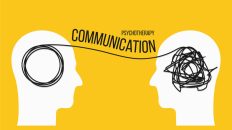“Do not follow where the path may lead. Go instead where there is no path and leave a trail” –Ralph Waldo Emerson.
Successful leaders have not just excelled in hard skills; they’ve also conquered soft skills. Let’s understand each element in detail:-
- A LEADER is a powerful person who influences, guides, or directs a group to move towards a common organisational vision. LEADERSHIP is the ability or quality that makes an individual a leader.
- HARD SKILLS are job-specific, teachable skills that are easy to quantify, such as computer skills, foreign language proficiency, SEO marketing, technical skills, or a degree/ certification that backs up your skills; on the other hand;
- SOFT SKILLS are job-specific, teachable skills that are easy to quantify. Soft skills are more intangible, non-technical character traits and interpersonal skills that enhance one’s relationships in the social environment. Also known as “people or interpersonal” skills, honing social skills is crucial for global captainship to bring out the best in his/her team members, maintain an organised team, build company morale, and maintain congenial relationships inside and outside the organisation.
In this article, I will be discussing one key element of great generalship to ace the art of soft skills, and that is to PURSUE. Yes, you read it right. Great commanders follow a course of activity, try to achieve impressive results, and continue doing or chasing something until they achieve success. Wondering how to identify, develop, and PURSUE the required soft skills to become a great headman? Here are the answers: –
Also Read: Communication: The most sought-after Soft Skill : Rupal Jain
Pursue emotional intelligence: Emotional intelligence (also known as EI) is sometimes referred to as Emotional Quotient (EQ). It is the ability to recognise and understand emotions in oneself and others. This ability also involves using this emotional understanding to make decisions, solve problems, and communicate with others. Here is an example of how one of the world’s most successful business figureheads applied EQ to her advantage to build relationships, improve job satisfaction, and gain an advantage in the organisation. Indra Nooyi, PepsiCo’s former Chairman and CEO, after taking on the company’s top job, wrote a letter to the parents of each of the members of her executive team. She wrote a paragraph about their child’s role in the organisation and thanked them. Can you guess what their reactions were? Parents replied to her, stating that they were honoured. A few of the executives acknowledged her efforts and told her it was the best thing that had ever happened to their parents. She firmly believed that the best way to retain your personnel is by hooking them emotionally to the job, through the company’s business model and what it stands for.
Trivia- An emotionally intelligent commander can create a more connected and motivated team and lucratively steer the enterprise more efficiently.
Pursue Delegation: Great heads lucratively implement the steps of the delegation in-process and implement the best strategies to complete each stage.
Stage 1: By identifying the organizational, departmental, and team goals, they analyse the task they wish to delegate.
Stage 2: By using goal analysis as a yardstick to their objective, they select the “right man for the right job at the right time” based on an individual’s interests, abilities, needs, and strengths.
Stage 3:-By clearly defining the task and expected outcome to the delegate, the figurehead provides the required support, information, knowledge, skills, and resources required to perform the task successfully.
Stage 4: By monitoring and reviewing the progress at regular intervals, they ensure that the task is accomplished.
Stage 5: Finally, by learning from mistakes and rewarding the performers, the captain creates a motivating environment.
Trivia – Distinguished leaders delegate routine/administrative tasks and concentrate their efforts on strategies or higher-value activities.
Pursue Effective Communication: Good communication is a fundamental captainship function and a vital trait of a successful commander. A controller with good communication skills can improve total employee experience, synergy, purposefulness, and interdepartmental and intradepartmental divulgence in the enterprise. Correspondence is the most demanded soft skill that employees are looking for in their supervisor. A visionary superior knows how to-
- Make a list of short and long-term goals;
- Handle the rapid flow of information both inside and outside of the organization;
- Excel in communiqué contexts, including verbal, non-verbal, written, visual, and listening (yes, active listening is the core element of interpersonal conversation skills);
- Build a culture of trust in communication.
Trivia – Looking at your phone while someone is talking to you is a sign of “poor communication.”
Pursue 360 Listening: Best torchbearers practice deep listening proficiency to reach the next level and improve further. They pay attention to not just what the person says but also what he or she doesn’t say. They concentrate on the speaker’s body language and non-verbal signals like their posture, eye contact, gestures, facial expressions, or even paralinguistics like loudness or tone of voice. They make direct eye contact, ask powerful questions, don’t judge, assume, or come to any conclusion before the person finishes speaking, try to remove or at least minimise distractions to give full attention to the speaker, and finally, they practice empathy by imagining themselves in the other person’s shoes.
Trivia: Showing empathy does not mean you have to feel pity, sorry, or patronise others; it just means you have an ability to understand or sense other people’s emotions.
Pursue Creativity: In 2010, the IBM Global CEO Study polled over 1500 chief executive officers to determine which was the most important quality for heads to have in order to build a successful business. Surprisingly, it was creativity, followed by integrity and global thinking. How does creativity lead to success? Louise Stoll and Julie Temperley (2009) suggest that creative leaders foster conditions that can help to inspire creativity in others. These conditions include: “stimulating a sense of urgency if necessary; exposing colleagues to new thinking and experiences; providing time and space to facilitate the practicalities; setting high expectations; promoting individual and collaborative creative thinking and design; using failure as a learning opportunity; relinquishing control; and modelling creativity and risk-taking.” Without creativity, there is no learning, no challenges, and no innovation.
Trivia:- Steve Jobs, chairman, chief executive officer (CEO), and co-founder of Apple Inc., is still considered a creative genius, who not only introduced innovative products like the iMac, iPhone, iPod, and iPad but revolutionised the computer, entertainment, music, retail, mobile, and telecommunication sectors. He often cited “being more creative at work” as his secret to being super successful.
Pursue Teamwork: Guardianship is about guiding, motivating, and influencing other members to act towards achieving a common goal. Teamwork is about collaboration within a group to complete a task most effectively and competently. A good convener facilitates the collaboration process by-
- building harmonious goals,
- celebrating success and failures together,
- creating teamwork recognition programs,
- generating learning opportunities for others,
- empowering team members to focus on solutions, not problems,
- focusing on the problem, not the person,
- encouraging creative thinking,
- fostering multi-way communication,
- Last but not least, nurturing a sense of ownership, self-confidence, and visionary thinking which is required to encourage resolutions, manage conflicts, and build cooperative teams.
Trivia: Ace chiefs celebrate failures as much as successes. Know why? Failures provide an opportunity to learn from them, overcome fear and move on from there. It makes us rethink, reconsider, and rebuild our plans to achieve our targets. They replace the word “failing” with “learning” and “I” with “we”.
Pursue Ethical practices: “Is that your definition of ethics when you treat your labour force that way?” questions Ratan Tata, Indian industrialist, philanthropist, and former chairman of Tata Sons when he expressed his deep grief over the industry-wide layoffs that have taken place as a result of the COVID-19 pandemic. Several Indian and multinational companies have laid-off staff after the nationwide lockdown, citing lack of cash flow as the primary reason. At the same time, quite a few Tata group companies, including its auto business, hotels, financial services, and airlines, were severely affected, but Ratan Tata decided not to retrench a single employee. Tata Group decided to cut the salaries of its top management by up to 20%. He firmly believed that it’s impossible to survive as a company if one is not sensitive to its human resources. While making a profit is important, an ethical journey to achieve your objective is equally important. Business is not just for making money. One has to do everything right and ethically for customers and stakeholders. I couldn’t agree with you more, sir. The world needs more chiefs like him.
Trivia- Great administrators adopt the best business mantra: by ethics, for ethics, and of ethics.
Pursue Problem-solving and decision-making abilities: It is quite effortless to neglect the current situation and misunderstand the root cause of the problems in the organization. Only smart heads can avoid making premature judgments before coming to any conclusions. How? Great administrators become expert problem solvers and smart decision-makers by adopting appropriate problem-solving and decision-making techniques. Problem-solving and decision-making are interrelated and interdependent. Problem-solving is the analytical process of identifying the possible solutions to address a challenge and eliminating barriers, which often involves making decisions. Their four-step guide is:
- IDENTIFY the core dilemma to analyse the root cause of the problem.
- GENERATE alternative possible solutions to resolve the difficulty.
- IMPLEMENT the best possible alternative based on the organization’s internal strengths and weaknesses and external opportunities and threats.
- MONITOR the plan and track, access, measure, and evaluate the actual results or outcome to determine whether or not the problem has been solved. If so, congratulations. If not, identify the mistake and repeat the process till you achieve your desired outcome.
Trivia- Although problem solving and decision making go hand in hand, there is a major difference between the two. Problem-solving is more of an analytical form of thinking and also uses gut feelings in gathering facts. On the other hand, decision-making is more of making a choice using our judgments, where after thinking, one takes a course of action.
As aptly said that Employees leave managers, not companies. An Udemy study in 2008 revealed that nearly half of employees surveyed had quit because of bad bosses, and almost 67% believed their superiors lacked managerial training. Today, soft skills like listening, collaboration with the team members, empathy, emotional intelligence, and communication are highly valued and are more in-demand than ever before, and applying them on a daily basis makes a good forehead great.
Good guardianship is much more than simply being in charge. Think about it!
























